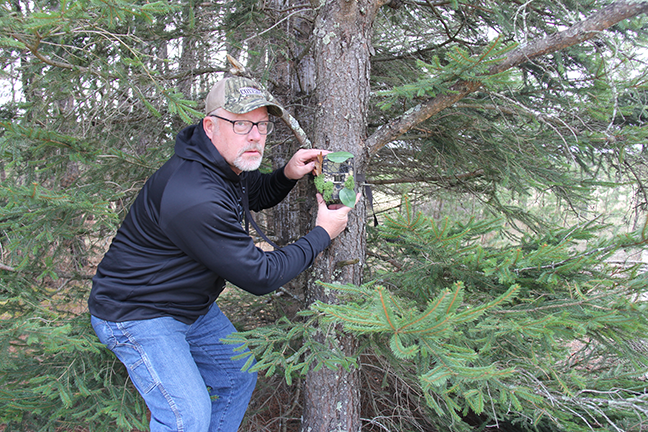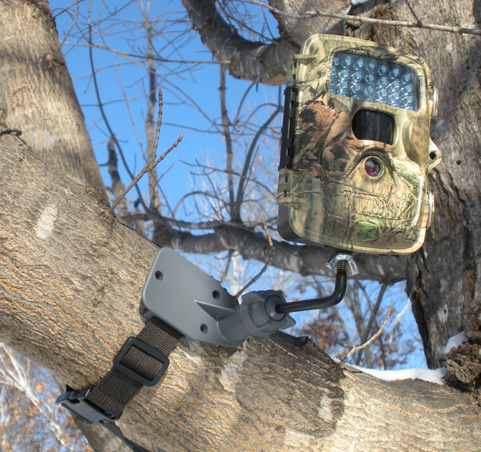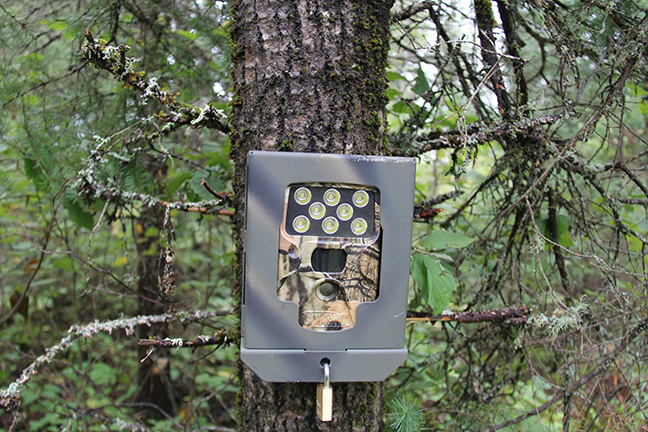Possibly the only thing that hurts worse than losing a trail camera to a thief is losing the information it contained. Here are three ways to minimize your losses.
The sick feeling in the pit of my stomach soon turned to anger as I stood there looking at the tree my scouting camera had been attached to the previous day. I hate losing a trail camera to a thief, but trail cameras can be replaced. What really made me angry was losing the information contained on the SD card. I was hundreds of miles from home on a DIY deer hunting trip.
The information gathered by these cams can be extremely valuable, and I refuse to use cheap cameras that don't have the features I need just because of the risk of losing them to some sticky-fingered low life.
I run a lot of good quality scouting cameras; it's almost like a sport in itself for me. I use them not only for deer hunting, but for bear hunting, property surveillance, wildlife viewing, even predator monitoring and control. I put some in areas where I don't expect anyone to ever find them, and at times I put some in areas where I figure others will see them and I hope they leave them alone. The number of cameras I have had stolen over the years could be counted on my fingers. It's not a huge problem, but it really can throw a wrench in the gears of your hunting plans. I have begun to take some precautions to avoid losing them to thieves. Here are three ways to minimize your losses.
Go Covert
One of the easiest ways to cut losses is to simply use cameras that are harder to see and hide them better. There are three primary kinds of flashes for night photos: white flash, infrared, and black flash. Black flash cameras do not have a flash that is visible to the eye. Both white flash and IR cameras have lights that can be seen by anyone who happens to be looking the right direction when they take a photo. I use mostly cameras with black flash because they are less likely to be discovered. There are a lot more than deer hunters using public lands, coon hunters come through in the night, squirrel hunters, ginseng hunters, and even metal detector enthusiasts can come across your cameras on public lands. I have the photos to prove it all.One of the things that draws your eye to a camera strapped to a tree is the webbing. That dark vertical line stands out amongst the rest of the environment. Use a camouflage strap and put the camera in a place where the strap is hidden by brush whenever possible.
Larger cameras are easier to spot than smaller ones. Many companies are making very small camera bodies that are not much bigger than your hand. Small black flash cameras are difficult to detect, but I go one step farther. I often glue small plastic leaves and moss to the face of the camera to break up its outline. You can get this material at any craft supply store. Of course, do not cover the lens, the sensor, or the flash with anything.
Put Them Out of Reach
One of the most effective ways to thwart thieves is to put the camera up where the bad guys cannot reach it. I like to hang the camera at least 10 feet off the ground and point it downward to monitor the area. Some people might be able to shinny 10 feet up into a tree to get the camera, but most won't. If a thief is actively looking for cameras to steal or a person is an opportunistic camera thief, neither of them are as likely to see a camera that's 10-12 feet off the ground as they are one at belt level to eye level.There are several companies that make mounts for cameras that work in this way. The two I have used are the Covert Tree-60 and the Stic-N-Pic.

Here's how I go about it. I carry a climbing stick to the location I want to put the camera. Just one stick. I can strap the climbing stick to the tree, climb up it, and reach at least ten feet off the ground to mount my camera. When I am done, I just take the stick out with me. It's not a totally fool proof way to get the camera out of reach, but it works. Remember to carry the climbing stick with you when you check the cameras. This is one of the most effective ways to protect your cameras in theft-prone areas. Plus the photos you get are often unique and pretty cool with the downward angle.
Putting cameras up high comes with another advantage: deer do not seem to notice the flash at all. I have seen some deer become alarmed by a white flash at eye level, but I have never seen a case where a deer reacted in a negative way to a flash 10 feet up.
Lock Them Up
Most camera companies are now making lock boxes for their cameras. This was at first a response to the fact that bears like to chew on scouting cameras, but it works equally well to discourage the camera thief. These steel boxes can be bolted to a tree and then the camera is locked securely inside the box.The disadvantages of this strategy include the extra weight of carrying the steel boxes with you and the extra tools needed to fasten it to the tree. But the disadvantages are far outweighed by the fact that it's really difficult for even the most determined opportunistic thief to steal your camera. And I have never seen anyone walking around the woods with a bolt cutter, although serious camera thieves might be dumb enough to risk that.

I have a separate backpack that I use which contains these boxes, lag bolts, padlocks and a cordless screwdriver with a socket. (Putting a screw in a tree on public land is not legal in some states; it is your responsibility to know the laws.)
I use the cordless screwdriver to fasten the box to the tree with lag screws, insert the camera, and then lock it up. It's really not that much extra work and makes it very difficult for any would-be
With a little extra effort, you can protect your cameras from thieves and get the photos you desire to help you learn more about the deer in the area. Each of these three methods has its time and place.
没有评论:
发表评论